It has been so long since Los Angles has been a part of the National Football League (NFL) that I have become totally agnostic about the New England Patriots and their behavior. Frankly, football has become such a brutally dangerous and concussion-causing undertaking for those on the field that I expect future generations will end the game as it is played today. Nonetheless, I have been closely following the NFL’s investigation of the use of under-inflated footballs by the Patriots in the AFC championship game against the Indianapolis Colts—“deflategate.” Actually, I feel I have the detachment a lab scientist watching mice, for my interest is in the process more than the outcome.
On May 6, 2015, attorney Ted Wells, a litigation partner at Paul, Weiss, Rifkind, Wharton & Garrison who was hired by the NFL to undertake an independent investigation, issued his report: “INVESTIGATIVE REPORT CONCERNING FOOTBALLS USED DURING THE AFC CHAMPIONSHIP GAME ON JANUARY 18, 2015“ (the Wells Report). It is a powerful document making the case that the Patriots and their quarterback Tom Brady violated the NFL’s rules.
Critics of the report (and the sanctions that followed) wanted a “smoking gun,” such as a video of the footballs actually being deflated before the game, or a text or email of Patriots quarterback Tom Brady instructing those handling the footballs to deflate them below the NFL standard. Because none was found, critics belittled key findings like: “We also note that there is less direct evidence linking Brady to tampering activities than either [James] McNally or [John] Jastremski,” who were clearly based on text messages in a deflating scheme. The report continues, “We nevertheless believe, based on the totality of the evidence, that it is more probable than not that Brady was at least generally aware of the inappropriate activities of McNally and Jastremski involving the release of air from Patriots game balls.” (Emphasis added, Wells Report at 16-17.) “More probable than not,” the critics shout, “that does not prove anything.” The critics want proof beyond a reasonable doubt. They simply ignore the fact that “beyond a reasonable doubt” is not the standard of proof everyone within the NFL agreed upon, not to mention that this is not a criminal proceeding.
The Wells Report appeared to prove the improper deflating of footballs with solid evidence. When the NFL doled out its sanctions, I again looked at the Wells Report, and thought them justified. The NFL issued a press release with copies of portions of the letters sent by NFL Executive Vice President of Football Operations Tory Vincent to the Patriots and Brady. (The full letters do not appear to have been made public.) The Patriots were penalized for their “violation of the playing rules” (meaning deflating of the game balls on January 18, 2015) and “the failure to cooperate in the subsequent investigation” (to produce James McNally for a second interview) and accordingly fined $1 million, and they were also forced to forfeit a first-round selection in the 2016 NFL draft and a fourth-round selection in the 2017 NFL draft.
Based on the Wells Report, I thought this case was closed. But the Patriots have now made clear there is another side to this story.
On May 14, 2015, David Goldberg, a senior partner of Morgan Lewis, the law firm representing the Patriots, published a response to the Wells Report, seeking “to provide additional context for balance and consideration.” The document—“The Wells Report in Context” (The Goldberg Report)—is not without hyperbole, yet in the end it shreds the central contentions and evidence upon which the NFL sanctioned the Patriots and Brady. The Wells Report without appendices runs about 40,000 words. The Goldberg Report runs about 20,000 words, and has a few hyperlinks in the online version.
The Goldberg Report annotates the executive summary of the Wells Report, drawing on other sections of the Wells Report as well as information gathered but not reported by the NFL’s investigators. It begins with an unpersuasive claim that the NFL itself should have warned the Patriots of the concern by the Colts that the Patriots were using under-inflated footballs. It proceeds to show the science that was passed over by the Wells Report was a mistake, noting for example that the Colts footballs also lost pressure during the game and were also under the NFL requirement, and this response ends by showing that the evidence ignored by the Wells Report actually explains the ostensibly incriminating text messages.
The Goldberg Report is not persuasive in claiming the NFL and Ted Wells did not conduct a fair investigation. Or that Ted Wells was somehow in cahoots with the NFL because his law firm does other work for the NFL—work the Goldberg Report argues should have been disclosed. In fact, David Goldberg is similarly in cahoots with the Patriots. Yet the Goldberg Report is very persuasive when addressing the alternative meaning of the seemingly incriminating text messages. In fact, in re-casting the evidence it raises questions that should have been addressed by the Wells Report.
A few examples. While the Wells Report makes James McNally’s removal of the game balls to the playing field appear highly suspicious, the Goldberg Report’s focuses on the evidence that makes it appear anything but suspicious. The Wells Report appears to provide a science-tested explanation of how McNally could have deflated the games balls during his one minute and forty second stop in the bathroom, while the Goldberg Report notes this seemingly authoritative test actually raises more questions, such as:
There is no indication in the [Wells Report’s special] report of the size, agility or age of those who raced to complete the task as quickly as possible — and hence no real assessment of whether a person of Mr. McNally’s age and physical characteristics [an older and overweight man] could have accomplished this task, which would involve taking the footballs out of the bag, putting them on the floor (which happens to be sloped, increasing the level of difficulty if footballs were laid out on the floor), carefully controlling them to be sure not to deflate any football twice, returning them to the bag, unlocking the door and leaving. In all events, there was good reason for Mr. McNally to stop in the bathroom, since his sideline duties require he be on the field the entire first half.
Although I chuckled when I heard on the news that McNally’s incriminating description of himself as the “deflator” referred to his effort to lose weight, when I read the Goldberg Report’s full explanation I found it very credible. Here is part of that explanation, without the text messages that fully support the contention of the Patriots:
Mr. Jastremski would sometimes work out and bulk up — he is a slender guy and his goal was to get to 200 pounds. Mr. McNally is a big fellow and had the opposite goal: to lose weight. “Deflate” was a term they used to refer to losing weight. One can specifically see this use of the term in a Nov. 30, 2014 text from Mr. McNally to Mr. Jastremski: “deflate and give somebody that jacket.” This banter, and Mr. McNally’s goal of losing weight, meant Mr. McNally was the “deflator.” There was nothing complicated or sinister about it.
The Goldberg Report is also persuasive in explaining the alleged failure of the Patriots to cooperate, principally in producing James McNally for a second interview, actions which when explained appear justified. In fact, McNally was interviewed four times, three times by NFL officials and once by Wells (with three other attorneys), and he fully cooperated. After the fact, it is clear that the Wells investigative team missed the McNally text message where he called himself the “deflator,” so they wanted to interview him again, notwithstanding the fact Wells had agreed at the outset that individuals would only be interviewed once, barring “unanticipated circumstances.” When the Wells investigators asked for a second interview, they were asked the nature of the “unanticipated circumstances,” but as the Goldberg Report states, they were not told, adding (since this was an express basis of the sanction), “It now appears that the Patriots are being severely punished because the Wells investigative team apparently overlooked materials they had in their possession long before their interview with Mr. McNally — scarcely an ‘unanticipated circumstance’ calling for yet another interview — and refused to disclose their reason for an additional interview. There was no refusal to cooperate by the Patriots.”
This response is the adversary process at work, which is one of the best means to uncover the truth, particularly when testimony and documents can be compelled under oath, which is not the case here. As the debate over “deflategate” continues, what truly should be at issue are the NFL rules, which do little to provide a satisfactory process for investigations and inquiries of this nature. Football fans are entitled to no less, and hotly contested issues that can ruin reputations need resolution. The NFL’s current rules and procedures invite the free-for-all they have produced in “deflategate.” But stay tuned; this may go into overtime.







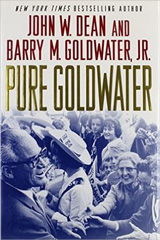
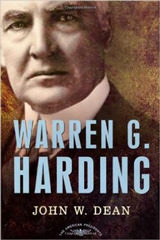
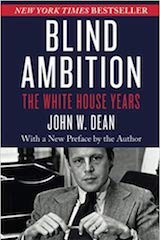
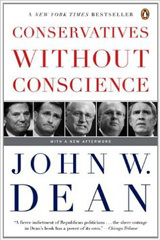
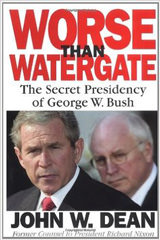



This does not suck. :) I have yet to hear how “Deflate and give somebody that jacket” refers to Ball PSI.